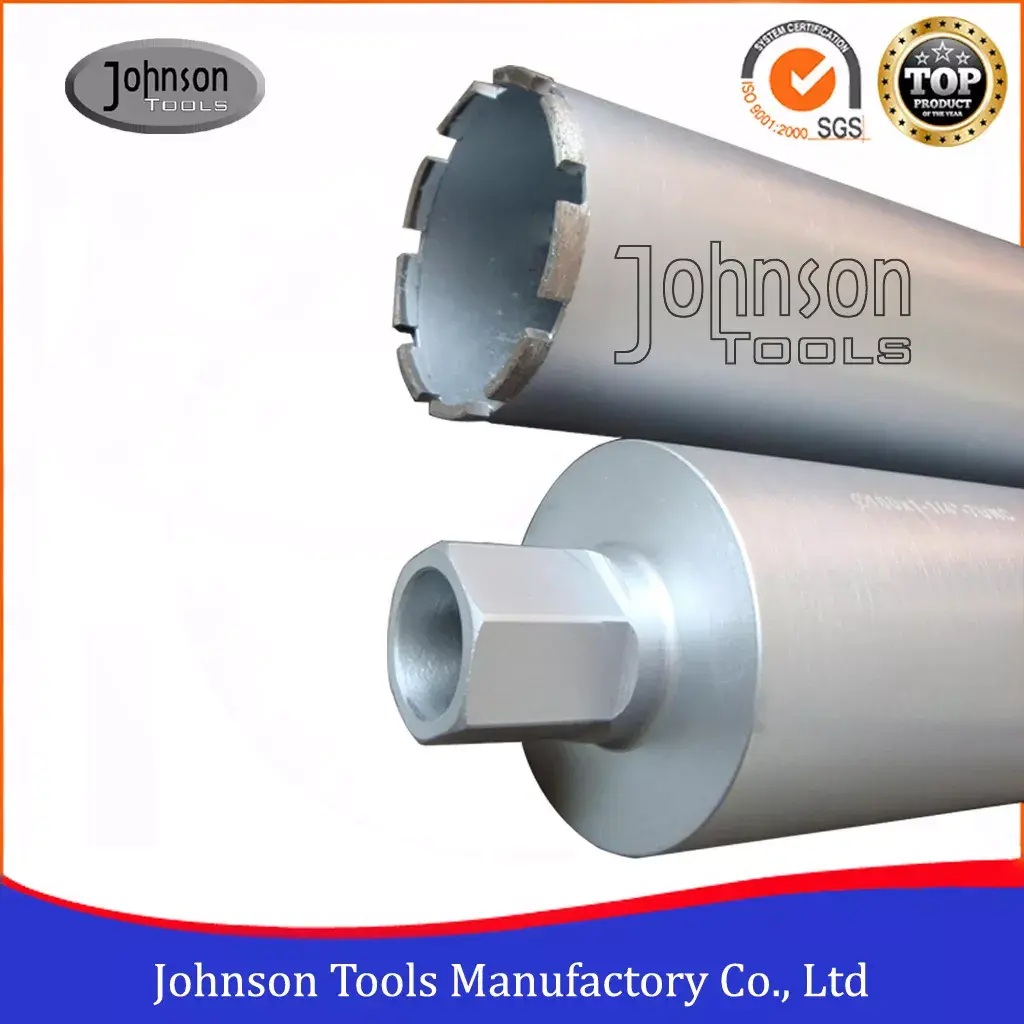Global Leading Diamond Tool Manufacturer.
Unlocking the Secrets of Concrete Core Drill Bits Working Principle
Concrete core drill bits are designed to tackle tough jobs with ease, making them invaluable in both construction and industrial settings. These bits are perfect for tasks such as installing pipes, cutting openings for doors and windows, and creating access points for utilities. They provide clean and precise cuts, ensuring that the concrete remains structurally sound and aesthetically pleasing. Understanding how these bits work and how to maintain them can greatly enhance your projects.
Why Concrete Core Drill Bits Are Crucial
- Precision Cutting: Achieve clean and precise cuts with minimal vibrations and damage to surrounding material.
- Efficiency: Reduce drilling time and effort, making your projects more efficient.
- Durability: Crafted from tough materials like tungsten carbide and diamond-coated surfaces, ensuring longevity.
Understanding the Structure of Concrete Core Drill Bits

Components of a Concrete Core Drill Bit
A concrete core drill bit is made up of several key components that enhance its performance and durability:
- Bit Body: The main part of the drill bit that includes the cutting teeth and flutes.
- Cutting Elements: Sharp points responsible for cutting through the concrete.
- Shank: The connection point between the drill bit and the drill machine.
- Flutes: Spiral grooves around the circumference of the drill bit. They serve to evacuate debris and prevent it from building up and clogging the bit.
Each component plays a crucial role in the drill bit's performance, allowing it to cut through concrete with minimal damage to the surrounding material.
The Working Principle: How Concrete Core Drill Bits Operate
Drilling Process
The concrete core drill bit operates by rotating and penetrating the concrete surface. The bit body rotates at high speeds, with the cutting elements slicing through the concrete. As the bit advances, the flutes remove the cut material, preventing it from building up and clogging the bit.
Role of Cutting Teeth and Lubrication
The cutting teeth are specifically designed to withstand the high pressures and temperatures generated during the drilling process. They can be made from tungsten carbide or diamond-coated surfaces, which provide excellent durability and cutting efficiency. The continuous motion of the flutes ensures that lubrication is maintained, reducing friction and heat buildup.
Factors Influencing the Performance of Concrete Core Drill Bits
Comparison of Different Materials
Different materials used in drill bits can significantly impact their performance. Tungsten carbide and diamond-coated bits are often used for their hardness and cutting efficiency.
Factors Affecting Performance
- Bit Diameter: Larger bit diameters can reduce drilling time but may increase the risk of overheating. Proper bit size selection is crucial.
- Material Hardness: The hardness of the concrete being drilled affects the bit's performance. Harder concrete requires more robust cutting elements.
- Drilling Speed: The drilling speed should be adjusted based on the bit size and material hardness. Faster speeds can lead to increased heat buildup, while slower speeds may result in inefficient cutting.
Maintenance and Care for Concrete Core Drill Bits
Best Practices for Longevity
To ensure the longevity of your concrete core drill bits, follow these best practices:
- Clean the bit after use to remove any accumulated debris.
- Store the bits in a dry location to prevent moisture from causing premature wear.
- Replace the bits when they show signs of wear or damage.
Common Issues and Troubleshooting
- Weld Failure: Prevented by proper maintenance and timely replacements.
- Bit Fracture: Excessive heat buildup can lead to bit fracture. Ensure adequate lubrication and adjust drilling speeds accordingly.
Comparative Analysis: Concrete Core Drill Bits vs. Other Drilling Tools
Direct Comparison with Masonry and Hammer Drill Bits
Masonry Drill Bits: Designed for softer materials and lack specialized cutting elements for concrete, making them less effective and more prone to wear.
Hammer Drill Bits: Combine spinning with hammering action to break up concrete. While effective, they generate more heat and require more power, making them less efficient for precise cutting.
Advantages and Disadvantages
- Concrete Core Drill Bits: High precision, clean cuts, and low heat generation. However, they are more expensive and require more skill to use.
- Masonry and Hammer Drill Bits: Less expensive and easier to use, but less effective on concrete.
Real-World Applications of Concrete Core Drill Bits
Successful Concrete Drilling Projects
Case Study 1: A construction company used concrete core drill bits to create access points for utility installation. The bits were able to cut through hard concrete with minimal vibrations, ensuring the structural integrity of the building.
Case Study 2: In a high-rise building renovation, concrete core drill bits were used to install new ventilation ducts. The bits provided clean and accurate cuts, reducing the time and effort required to complete the project.
Challenges Faced and Performance Analysis
- Challenge: Difficult concrete conditions led to increased heat buildup and bit wear.
- Performance: Proper lubrication and timely bit replacements ensured efficient cutting and minimal downtime.
Future Trends and Innovations in Concrete Core Drill Bits
Emerging Technologies and Materials
Diamond-Coated Bits: Continuous advancements in diamond coating technology are leading to bits with longer lifespans and enhanced cutting performance.
Composite Materials: The use of composite materials is increasing, offering improved durability and cutting efficiency.
Potential Future Advancements
- Smart Drill Bits: Integration of sensors and AI for real-time monitoring and optimization of the drilling process.
- Sustainable Materials: Focus on eco-friendly and biodegradable materials to reduce environmental impact.
Empowering Your Construction Project
Understanding the working principle, maintenance requirements, and future advancements of concrete core drill bits is crucial for anyone involved in construction or DIY projects. By knowing how to choose the right bit and best practices for maintenance, you can ensure optimal performance and achieve cleaner, more efficient cuts. Whether you're a professional contractor or a DIY enthusiast, having this knowledge will help you make informed decisions and improve your projects.

